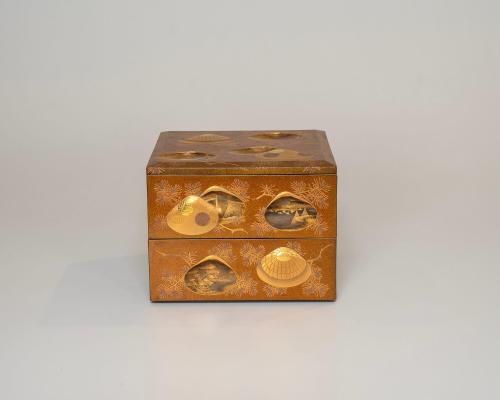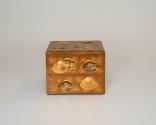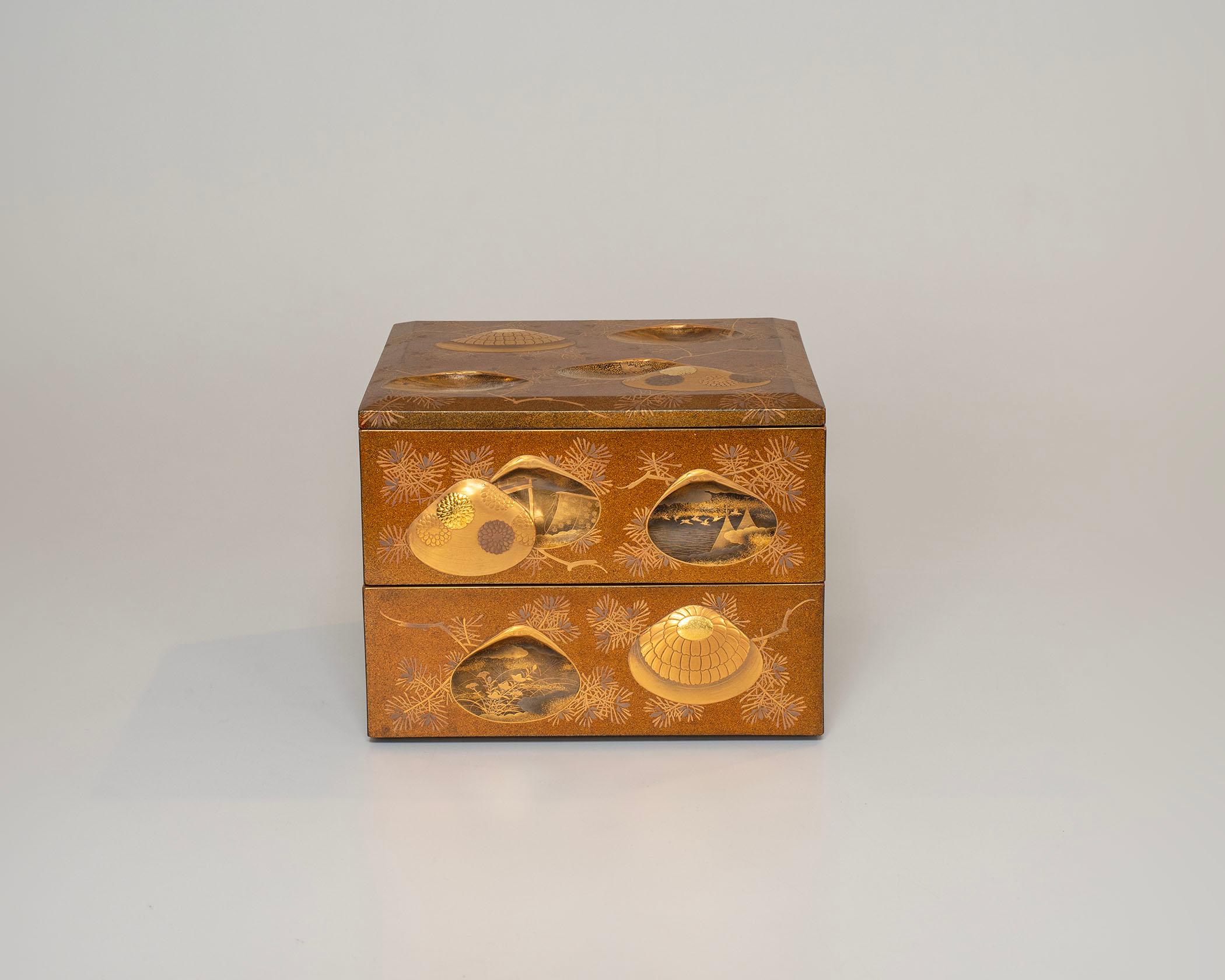Boxes and Shell Game (Kaiawase)
Date: Edo Period (1615-1868), about 1750
Dimensions:
3 boxes and cover: H: 9 9/16 in.; W: 9 9/16 in.; Depth: 10 3/4 in.
2 boxes and cover: H: 9 9/16 in; W: 9 9/16 in.; Depth: 7 7/16 in.
Base: H: 11 13/16 in.; W: 11 13/16 in.; Depth: 3 3/4 in.
Medium: Lacquer and shells; Nashiji ground with hiramakie design. 6 pairs of painted shells.
Place of Origin: Japan
Classification: Utilitarian Objects
Credit Line: Gift of Harry A. Fee
Object number: 1952.55A-N
Label Text:The Hamaguri, a kind of clam, was highly prized in Japan as the finest of all shell fish. The shell of the hamaguri became the basis of a frivolous game (kaiawase) played by court ladies from the 13th to the 19th century. To play the game, 360 shell halves were divided between two players or teams. Only the correct halves of a particular shell would join. The object of the game was to find the joining shell halves.
Description5 boxes, 2 covers, and a base.
Not on view
In Collection(s)












